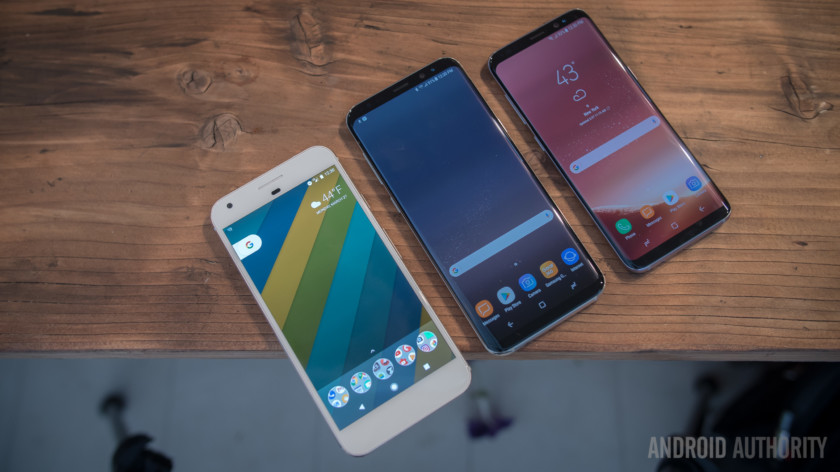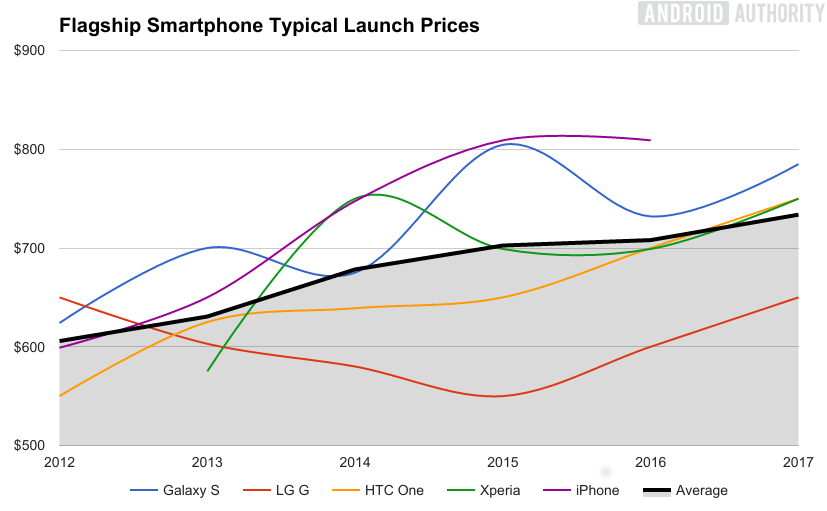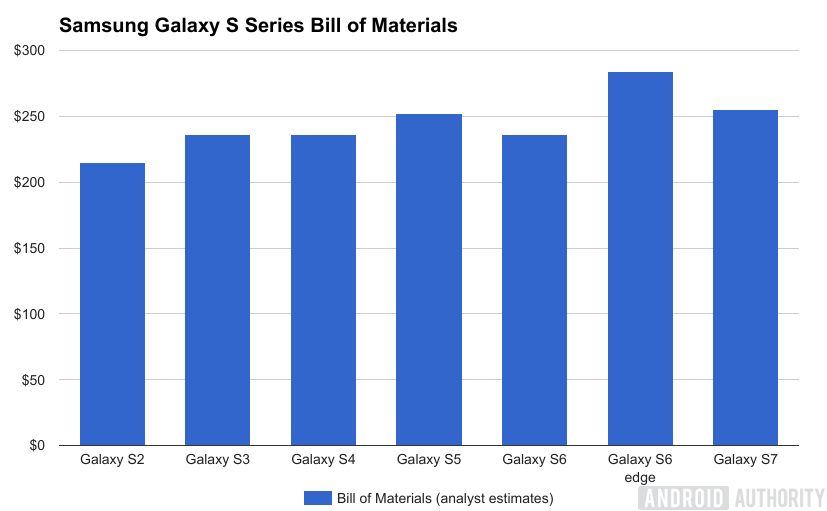Based on materials from android-softwares.com

Buying the very latest flagship is always expensive. And if you're lamenting that previous generations of users paid less for their phones and today's customers are overpaying, you're not alone. In some cases, you can easily pay $ 1000 for a flagship device – it depends on its modification and a number of other points. But less than ten years ago, we thought the price tag of about $ 700 was too high.
Of course, now we have a wide selection of manufacturers and models, respectively, functionality and price will also differ. Still, it's hard to shake the feeling that the very best smartphones from major manufacturers, like the Google Pixel, are more expensive than ever before. Perhaps these prices are dictated by the lust for profit that top device manufacturers are obsessed with?
Let's take a look at the prices at the time of the release of representatives of the incredibly popular line of flagships Samsung Galaxy S. The series of flagship devices has been gradually increasing the minimum and average price of the flagship over the past five years.

Of course, there is a wide range of prices dictated by operators' proposals, local specifics in the regions. A number of buyers are forced to purchase the flagship for over $ 1,000 with a two-year contract. Interestingly in the case of the Galaxy S series, Samsung's recent shortage of memory options in the US and Europe has led to a situation where the highest prices for the Galaxy S7 Edge and the new S8 Plus are lower than the 128GB Galaxy S6 Edge. . Despite this, we can still observe a tendency for the minimum price to rise, which has made up about $ 100 over the past five years.
If we look at the wider range of flagships released in the past five years, we see confirmation of the general trend described above. Once again, local prices vary to a certain extent, but overall the data shows the following: the typical flagship price tag rose from close to $ 600 in 2012 to almost $ 750 in early 2017.

Thus, taking inflation into account, a typical flagship smartphone of late 2016 – early 2017 does indeed cost more than a similar device in 2012.
The price increase for flagships is approximately 25 percent, depending on the specific line. This definitely beats the rounded 10 percent inflation rate of the US dollar. And that means your typical flagship smartphone is actually more expensive than its counterpart five years ago. However, do not rush to be indignant. There are reasons for this, and they just do not give a reason for indignation.

Does the new hardware increase the price?
There is no doubt that a typical smartphone from 2012 is not much like those devices that are now being announced by the same LG, Samsung and Sony. It's not just the hardware that has dramatically improved, which has increased performance. The build quality and materials in current smartphones are also certainly higher, they look more expensive than previous generations of their plastic counterparts.
Moreover, the range of functions that smartphones have these days is much broader, and this requires more hardware capabilities and additional resources spent on device development. With a fingerprint scanner, fast charging technology, better audio components, and more, our phones are so much more technology-packed today. And we are not yet talking about the increase in the cost of processors, displays, fast memory in the past few years.
So, better materials and new features like fingerprint sensor and fast charging are inevitably increasing the cost of manufacturing phones over the years.
If we look at the cost of components for the Samsung Galaxy S series, we see steady growth from generation to generation. The cost of some components for the Galaxy S2 was about $ 215, and the components of the Galaxy S6 edge have a cost of about $ 284. That's a 32 percent increase in cost, while the regular Galaxy S7 shows a 19 percent cost increase over the Galaxy S2. Let's not forget that this data does not include hardware and software development costs, which could have increased as well.

To summarize all of the above, there is an obvious correlation between the cost of smartphone components, coupled with inflation, and the price of flagship smartphones from year to year. And despite the fact that our flagships are definitely more expensive than five years ago, this no longer seems to be the result of speculation. Not that this came as a surprise to us, given the heightened competition in the smartphone market over the past few years.
Growth of the 'super-medium' segment
Until now, we were talking about the most expensive flagship devices. However, there is a growing segment of the smartphone market, which is a combination of top-end features and much lower prices than premium devices. These 'super-mid-range' smartphones may not be so packed with the latest technology, making them closer to previous generations and offering a similar experience and prices below the $ 700 mark.
The rise of the 'super-midrange' segment offers buyers more value-for-money alternatives to premium flagships, while still having a lot in common with older flagships and their features. With this in mind, it can be argued that high-performance smartphones are now much more affordable than ever before.
It is in these smartphones that you can feel the benefits of falling technology prices. Reducing the cost of non-market processors, displays, memory and even camera modules through improved manufacturing techniques and reduced costs has spawned a new segment of the mobile market that simply did not exist five years ago. And in that sense, good phones are now cheaper than they've ever been.
So are we overpaying for smartphones?
Ask any of us if we want smartphones to cost less and the answer is straightforward. But staying on top of technology comes at a price, and the growing capabilities of high-end devices are driving price increases in recent years. True, a much wider range of devices is currently available to the buyer, and a number of high-performance models with excellent functionality are now cheaper than the flagships of past years.
